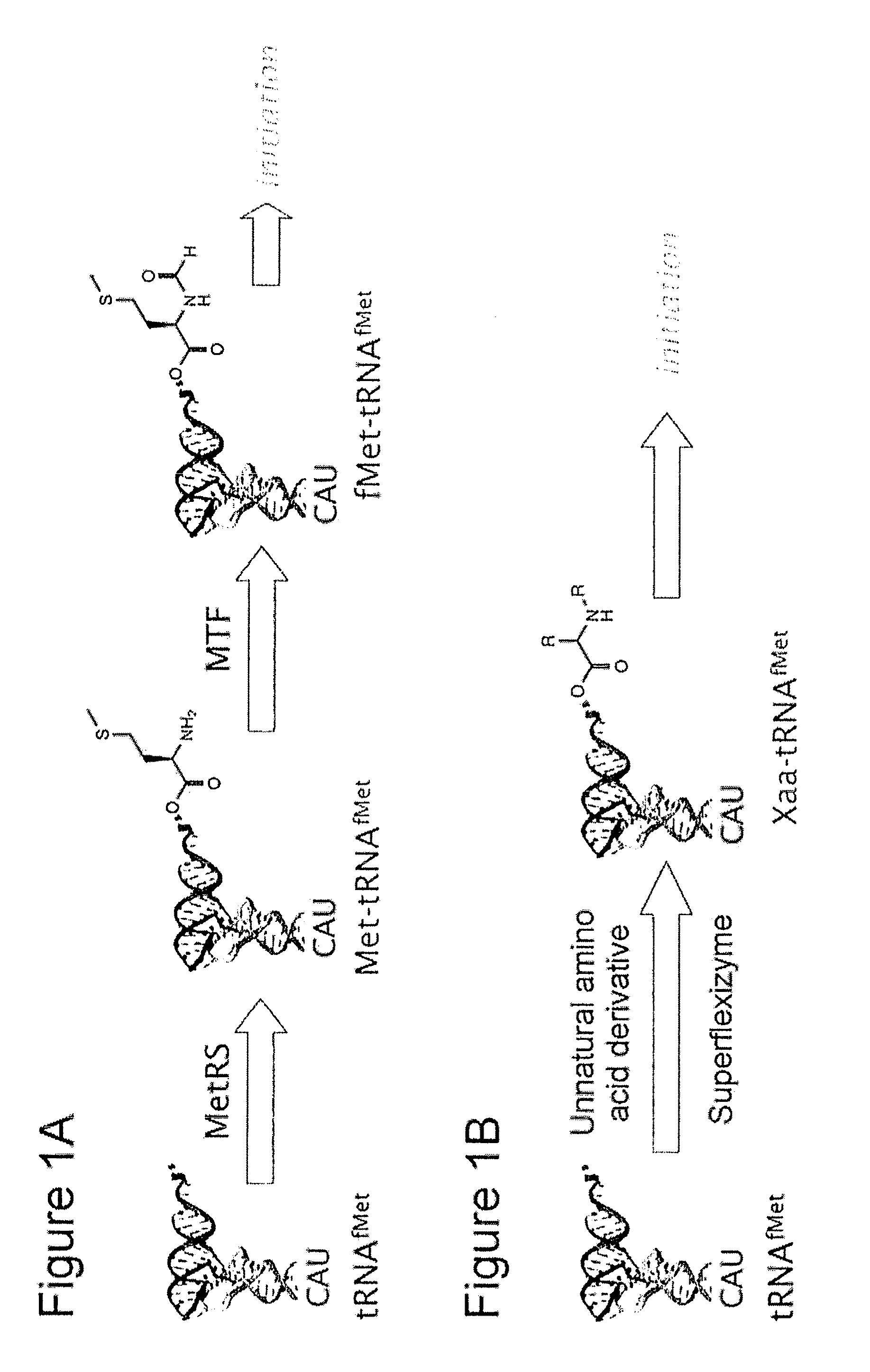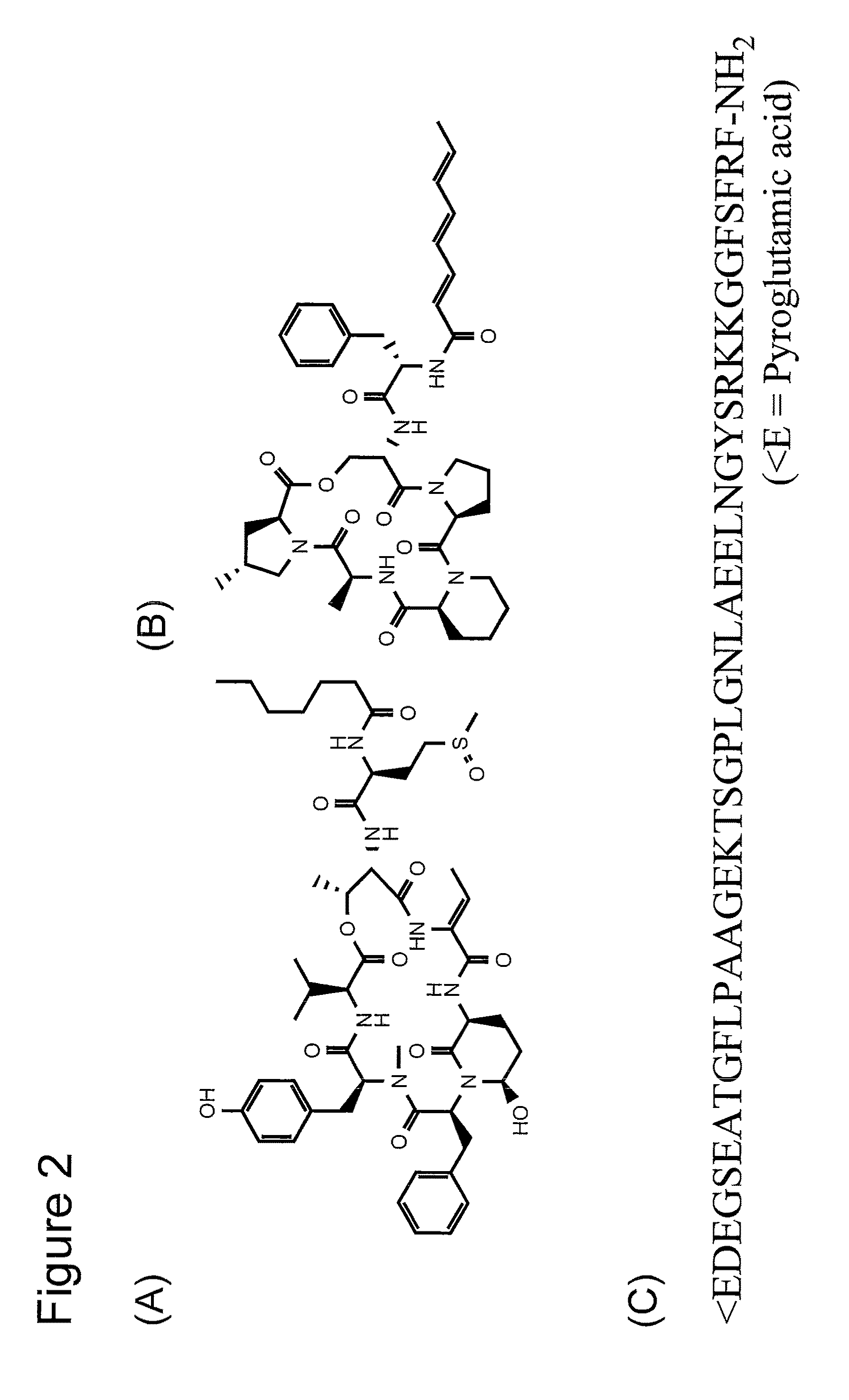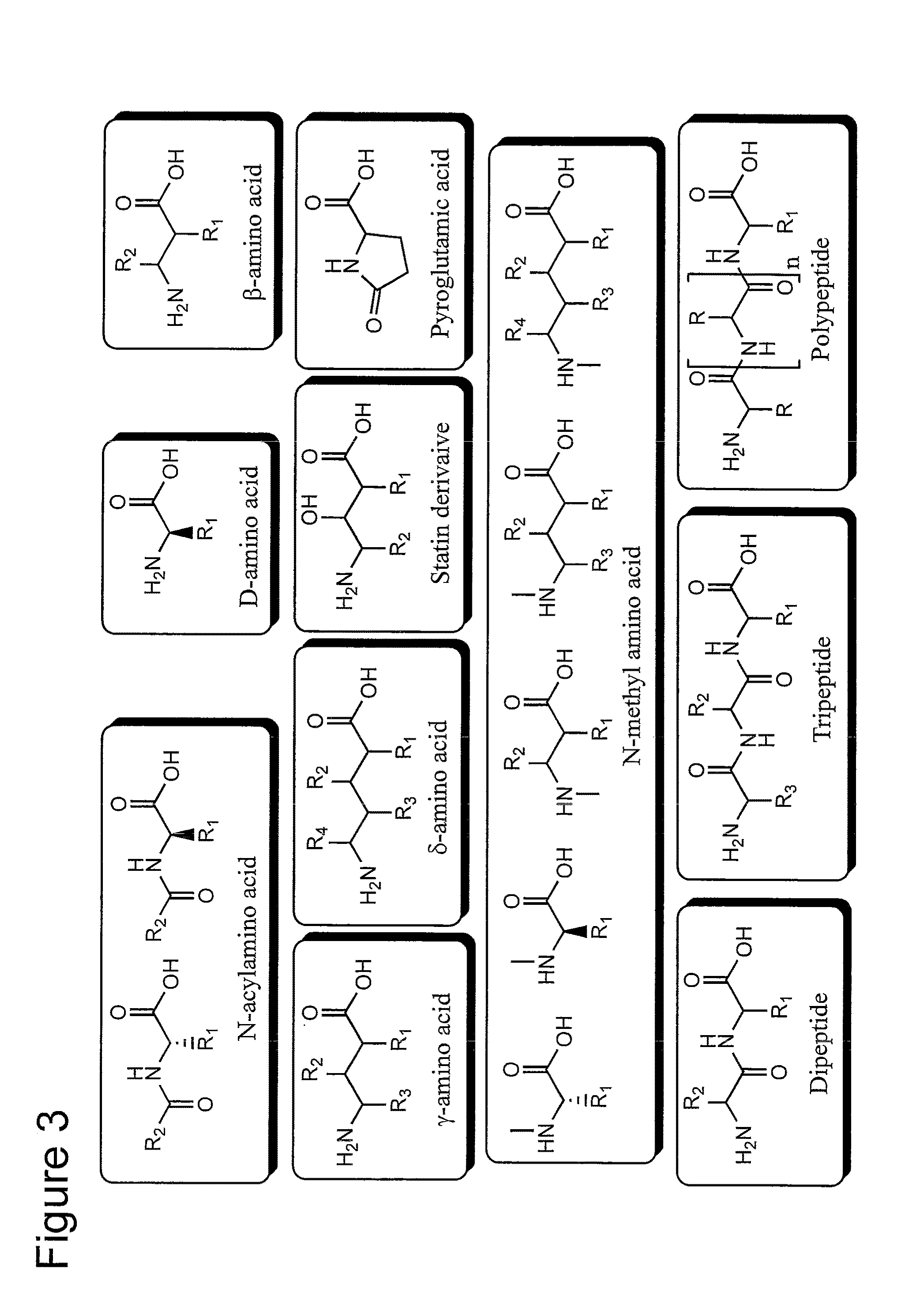Methods for ribosomal synthesis of polypeptides containing unnatural n-terminal groups and applications thereof
a polypeptide and ribosomal synthesis technology, applied in the field of new polypeptide synthesis methods and processes, can solve the problems of long peptides that are inevitably expensive, add technical complexity, and no case has been reported in which such a polypeptide was successfully synthesized through an artificial translation system
- Summary
- Abstract
- Description
- Claims
- Application Information
AI Technical Summary
Benefits of technology
Problems solved by technology
Method used
Image
Examples
examples
[0115]In the examples described below, Superflexizymes were used as ARS ribozymes, and a prokaryotic-derived reconstructed cell-free synthesis system additionally comprising a transcription system from cDNA was used as a translation system.
[0116]1. Synthesis of amino acid substrates
[0117]The present example describes the synthesis of amino acid substrates having modestly activated ester bonds for use as substrates for Superflexizyme-mediated acylation reaction (hereinafter sometimes simply referred to as “substrates”). The substrates had to contain an aromatic ring in their molecules in order that they could be recognized by Superflexizymes. When an aromatic ring was used as a leaving group, the ester bonds were activated by a thioester (CBT), or activated by an ester having an electron-withdrawing functional group in the aromatic moiety (DBE). Amino acids or peptides having an aromatic ring in their side chain were activated by a cyanomethyl ester (CME).
[0118]1.1. D-amino acids, N-...
PUM
| Property | Measurement | Unit |
|---|---|---|
| molecular mass | aaaaa | aaaaa |
| pH | aaaaa | aaaaa |
| volume | aaaaa | aaaaa |
Abstract
Description
Claims
Application Information
 Login to View More
Login to View More - R&D
- Intellectual Property
- Life Sciences
- Materials
- Tech Scout
- Unparalleled Data Quality
- Higher Quality Content
- 60% Fewer Hallucinations
Browse by: Latest US Patents, China's latest patents, Technical Efficacy Thesaurus, Application Domain, Technology Topic, Popular Technical Reports.
© 2025 PatSnap. All rights reserved.Legal|Privacy policy|Modern Slavery Act Transparency Statement|Sitemap|About US| Contact US: help@patsnap.com



